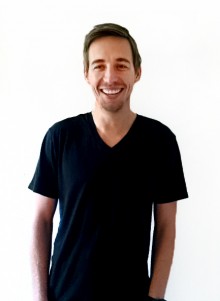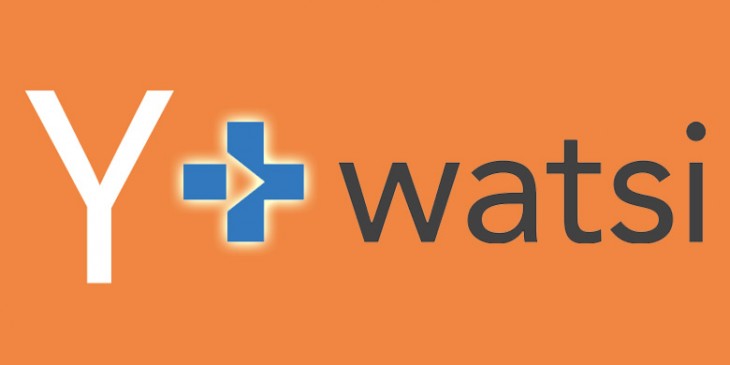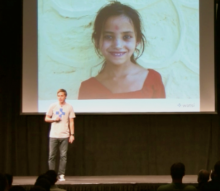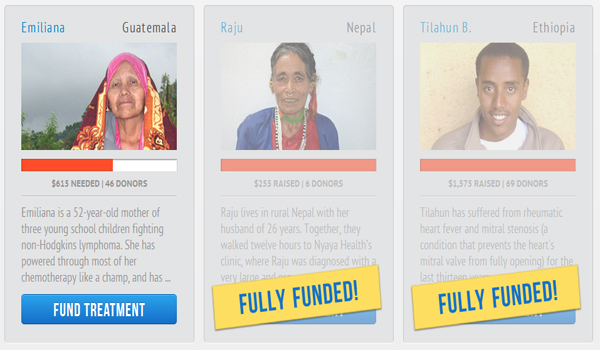
This is the story of Watsi a non-profit that found itself in the care of a startup accelerator called Y Combinator (YC). YC normally works with for-profit companies focused on technology innovation, and has generated successful businesses worth billions of dollars. A startup accelerator backing a non-profit can be compared to the unlikely scenario of a tiger raising a bunny.
Watsi is a crowd-funding health care platform, a non-profit that has been hailed as the missing link between charity and the online social generation. TNW covered YC’s announcement to fund Watsi earlier. Watsi allows donors to pay for medical treatment needed by a person in a developing country. The website has a limited number of patient profiles. Each profile has a photo and a compelling, concise story describing the medical treatment that the person needs.
It is hard not to donate to a patient on Watsi. A picture of a real person, with a genuine and often life-threatening medical need, is presented to you. The person is looking into your eyes and asking you to save their life. That one-to-one connection is overwhelming. Try it yourself here. Although Watsi is a crowd-funded health care platform, this is very much about the individual.
 Adam and I met in a hip little café in Hayes Valley, San Francisco, opposite a park. The sun is shining and it feels like a glorious day. I’ve recently had a baby and am noticing all the toddlers and mothers in the cafe. Most of these parents will never have to know the anguish suffered by the parents and children Adam is helping.
Adam and I met in a hip little café in Hayes Valley, San Francisco, opposite a park. The sun is shining and it feels like a glorious day. I’ve recently had a baby and am noticing all the toddlers and mothers in the cafe. Most of these parents will never have to know the anguish suffered by the parents and children Adam is helping.
Adam walks into the café, after a busy morning of meetings. Earlier this week he presented at Y Cominator’s 16th Demo Day. YC is perhaps the most prestigious startup accelerator in the world. He is excited about the earlier meetings. Whilst other YC companies are closing rounds of funding from investors, Adam’s is closing donations for Watsi. He says he will tell me the outcomes soon with a cheeky smile.
YC has played a large role in the life of Watsi. Adam credits Hacker News (the Reddit-like forum run by YC) in having a large role in bringing Watsi to life.
“My co-founder, Jesse (Jesse Cooke) and I launched Watsi in August last year to our Facebook friends. We got about ten donations,” said Adam laughing. Although happy about those donations, Adam wanted to publicize Watsi to more potential donors and posted information on Hacker News (HN).
According to Adam, he didn’t tell Jesse when he posted to HN asking readers for feedback since “it’s risky posting on HN, you could be received well or badly. Luckily for us it was the former. We hit the top spot and, due to the large number of people visiting the site, it went down within 20 minutes.” Throughout the day, Cooke worked hard to keep up with the increased loads and by the end of that day enough donations were raised to fund the treatments needed by all the patients listed on Watsi.
Adam told me that, to this day, he uses the comments from that HN thread as the “roadmap for the future of Watsi. When I get confused about Watsi I go back to that post on HN and remind myself that this is what people care about.”
Following the overwhelming positive response from the readers on HN, Adam decided to solicit some donations for funding the business side of Watsi. When people donate to fund a treatment for a patient on Watsi, Watsi doesn’t take a cut. All donations for patients go towards the treatments. Watsi accepts separate donations as funds to cover business expenses.
Adam quickly found that although investors were excited about the idea, that excitement did not transfer into donating towards Watsi’s overhead and administrative funds. When I asked him why he didn’t choose to apply for government grants and pursue other traditional sources of non-profit funding he explained that
“we are trying to pioneer a lean non-profit model which is in itself unique. The normal route is to raise money first and get a grant. I didn’t want to ask money from people until I had proven that Watsi worked. I wanted to get proof of concept and with the awesome response in HN I thought we had proved that. I went out after that to get money and there was no money. It was very difficult. Everyone thought the model was very cool but no one was writing checks. We stumbled for a few months. I quit my job we had no money, we were broke.”

In a bid to raise funds for Watsi, Adam and Cooke entered a competition which had a prize of ten thousand dollars. The competition was judged on public votes and Adam went back to the one place he knew would give him the winning votes, HN. Not only did this second popular post on HN help them to win the competition, but it also got the attention of Paul Graham, the founder of YC.
Adam’s leans in towards me, begins to speak then stops and waves his hands in the air. He is trying to decide if he should tell me. I finally put my finger on what it is about his personality that is so endearing. It is his innocence. Adam tells me that he hasn’t told anyone yet, and is grinning ear to ear. I lean in to hear his story. “I was flying home to Palm Springs and as I got off the airplane I did what everyone else does. I checked my email on my phone. All my new messages started to load up in my inbox. I then noticed that I had one email from Paul Graham.”
It was one of Paul Graham’s famous one-liners, which read: “are you in the Bay Area?”
“I was so excited I left my carry-on baggage on the plane. Can you believe it? I left without my luggage, I was so happy, I just walked out the gate. Yeah, it took about three hours to find my bags afterwards”
I’ve heard founders describe the feeling of getting into YC as being better than winning the lottery, so I tell him I can believe it.
Soon thereafter, the founders met Paul Graham (PG).
“We met PG right after the interviews for the current batch had happened. We had a great talk. The best advice we have received for Watsi came out of that meeting. He then invited Jesse and myself for dinner. PG made a personal contribution and he said, ‘beyond this I would love to support you guys. I would like to do that by inviting you to do YC.’”
The decision to participate in YC was an easy one. Adam can’t stop commenting on what a positive experience YC and the Valley has been for him. “The access to advice was amazing. The high quality advice from advisors was really appreciated. We were really excited to be part of that network.”
It appears that YC alumni have really rallied support for Watsi. Adam tells me that Stripe (payments service) will soon be processing all donations at cost, removing those hefty Paypal fees. Teespring ( personalized shirts seller) sold t-shirts on behalf of Watsi and donated the profits to them. These are just a few examples he can think of from the top of his head. YC companies make deals with each other continuously and states Watsi is doing the same.
Having attended all the YC lectures and talks, Adam found that new non-profit faced many of the same problems as statup for-profit companies. “We faced identical challenges. Like how to get users and understand the best way to re-engage them. Our build up to Demo Day (pitching to investors) was just as intense as the other companies.”
 Adam anticipated that the experience would change when it came to fundraising after Demo Day, and he has found that to be true. Most of his graduating YC class already had multiple offers of funding, inventors were tripping over themselves in the rush to “not miss the next Google”. I know a few of the YC Winter 2013 class had closed funding before even reaching Demo Day.
Adam anticipated that the experience would change when it came to fundraising after Demo Day, and he has found that to be true. Most of his graduating YC class already had multiple offers of funding, inventors were tripping over themselves in the rush to “not miss the next Google”. I know a few of the YC Winter 2013 class had closed funding before even reaching Demo Day.
Adam tells me about the challenges involved in closing funding. His story sounds familiar to those I’ve heard from non-YC companies that often struggle for funding in the open market. “Fundraising is tough” he says as he drags his fingers through his hair. I imagine it must appear tougher when comparing it to the ease of others in his YC class.
Like most founders he is eager to grow his team and build his product. The slow speed at which major donations, needed to fund the company’s operation, are coming in frustrates him. “The investors do not have the same sense of urgency when it comes to us.” Watsi has a lot of momentum and Adam doesn’t want to be slowed down. He sees his company as an equal to the others for-profits in his YC Class.
Although venture capitalists (VCs) are not allowed to donate money from their funds, Adam says many from Demo Day have offered to donate money personally. He thinks that all VC funds should allocate a set-aside for donating to charities. Perhaps in five years accerlator-supported non-profits will be in the same position as current YC companies when it comes to the relative ease and speed of fundraising.
“Our current retention rate of donors (individuals that have donated more than once) is thirty-percent, which is great for a new non-profit. This is only going to grow because right now we have zero re-engagement features other than email.”
Adam has a list of other new features he wants to add to Watsi, including the creation of a Global Fund (donating without choosing a patient) and gifted donations (donating on behalf of someone). They recently launched Tips, where donors can tip Watsi to support building the product. They are currently working on automatic repeat donations.

Adam is however particularly excited about another additional feature: “We’re going to have integrated one click payments/donations. One-click donations like Amazon, I’ve never seen a non-profit to do this, but I’m so excited about this.”
Adam long-term visions for Watsi are as revolutionary as his current work.
“Watsi is the first opportunity to provide healthcare for everyone. Every single person on this planet. I think the model is going to evolve a lot. Our goal is to become the largest crowdfunding medical treatment platform. This is way down the line, but we could move into providing social medical insurance. As soon as we have large enough dollars coming through the platform, we could even treat patients in the USA.”
I asked him if he would recommend that other non-profits apply to YC, and without missing a beat he replied, “yes. For three months we were able to focus on our mission and our products alone. We didn’t have to worry about fundraising or entering competitions or getting grants. We focused on our product and solving a problem. We grew like crazy in the last three months. We went from getting $2,000 of donations a week to $12,000. That’s a crazy growth….Every non-profit should have this opportunity for focus.”
As our chat draws to an end Adam leans in towards me again. He says perhaps it’s too early to share this, he looks around and smiles, then says, “our [medical] partners have said to us that patients who are part of Watsi receive better care.”
He explains that “Watsi has introduced accountability to the hospitals” to which they are affiliated because of their extreme transparency. “The outcome of the treatments are public,” Adam explains. “It is not uncommon in the developing world for patients to just disappear after receiving care. Now, because Watsi requires an update of the outcome of the treatment, hospitals are more regularly doing post-op check-ups.”
“Better hospital care is a huge unintended benefit of the Watsi model.” I tell him that this unintended benefit makes the Watsi movement more powerful.
Paul Graham has proclaimed that Watsi is “one of the more revolutionary things” being done online. With such strong recommendations, I am sure that it’s only a matter of time before Adam raises all the donations Watsi needs to grow and help more people.
Adam’s ideas are indeed visionary. The non-profit space is constrained by an inherent slow moving nature, filled with red-tape and forms. Perhaps the application of startup thinking to the charities will help disrupt the non-profit sector. We are a generation where instant and real-time is the way we live our life. Adam would like to empower us to save a person’s life in real-time, instantly with one click.
This bunny defiantly belongs in the tiger family.
You can help Watsi in three ways: donate, volunteer, and share.
Get the TNW newsletter
Get the most important tech news in your inbox each week.





